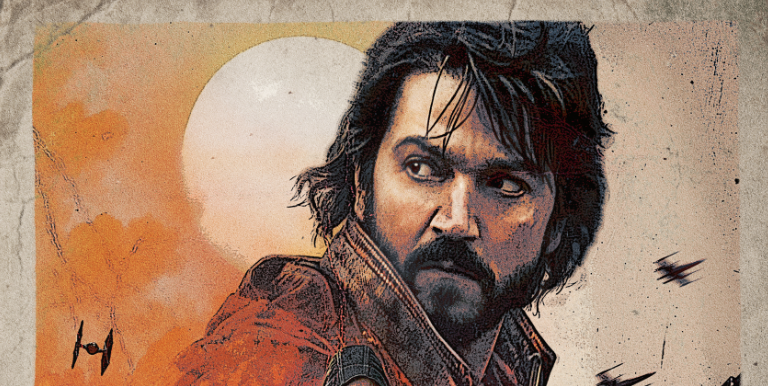‘Andor’ Is Telling the Star Wars Story We’ve Always Wanted

- Oops!Something went wrong.Please try again later.
- Oops!Something went wrong.Please try again later.
After one choose-your-own-adventure style western—which doubles as an extended campaign to sell small green merch—and a much-anticipated Jedi origin story, which turned into an awkward child-friendly rescue mission featuring toxic fan commentary, Disney has finally gifted Star Wars fans something adult and cinematic and, so far, with literally nothing to complain about. Set in a corner of the fandom occupied only by Rogue One and (if we’re lucky) Rogue Squadron, Andor chronicles the emergence of the rebel Resistance, a force seen in its maturity by the original Star Wars trilogy.
In Obi-Wan Kenobi, we catch a glimpse of the Resistance, with Obi-Wan transported by means of rebel spies through a kind of Jedi Underground Railroad. These networks mark the true infancy of the Resistance, just before which the Jedi had been targeted for extermination. Things are pretty bleak in Obi-Wan Kenobi. The Resistance is small and without many allies inside Imperial channels. The Empire is in full Spanish Inquisition mode, rounding up and killing the last of the Jedi. And most of the towns and cities we visit are firmly under Imperial rule—most loyal to the Empire.
Things are a bit different in Andor. The rebel alliance gathers like Mujahideen in the mountains. Soldiers, bureaucrats, and senators are now sympathetic to the cause. Towns are tired of living in fear of Imperial paddy wagons descending from the sky like British troops flooding into Belfast during The Troubles. For once in the history of Star Wars, we are actually starting to understand why folks even join the resistance. The Empire's "evil" isn’t just mean Jedis and Death Stars. It’s good old fashion totalitarianism. Andor exists in this space, which may be the most mature and politically salient so far in the franchise. (Sure, the original trilogy flirted with the antiwar sentiments of a Vietnam generation, but it did so with ... Ewoks). Andor is telling a story about totalitarianism, but without the usual cliché Nazi symbolism of the franchise’s previous installments. Star Wars finally feels kind of real.
Here’s where Andor fits within the rest of the franchise.
When Does Andor Take Place?
Events in the Star Wars universe are organized around the Battle of Yavin, during which the Death Star was destroyed; this battle took place, of course, in the very first Star Wars film (by release date), Star Wars: Episode IV – A New Hope. The Battle of Yavin is like the Julian and Gregorian calendars’ “BC” (Before Christ). Everything before the Battle of Yavin is listed as BBY, making the battle Year 0. Everything after is ABY.
So, for instance, the of The Old Republic begins in 25,000 BBY. The Clone Wars kicks off in 22 BBY.
The Clone Wars ends with the “Imperial Era,” which is when Andor, Obi-Wan, Rogue One, and most of A New Hope are set. This is when the Empire reigns.
Here are the rough dates for each.
Obi-Wan Kenobi (9 BBY)
Andor (5 BBY)
Rogue One and Star Wars: Episode IV – A New Hope (0 BBY)
Andor, therefore, takes place in between Obi-Wan Kenobi—during which the Resistance is only beginning across the galaxy—and Rogue One, when the Resistance is able to mount its first large scale attack on the Empire.
It also means that the Cassian Andor we see in Rogue One is only five years older than the one we meet in Andor.
Andor then becomes the origin story of one of the most important Rebel soldiers in the galaxy.
You Might Also Like

